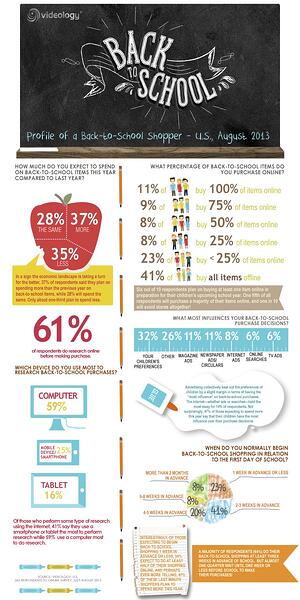
4 Tips for Promoting Infographics and Other Visual Content Online
September 6, 2013
By Ryan Malone
An infographic is visual content that uses graphic design to communicate data and statistics in an engaging way. Leading websites and publications like Mashable and The New York Times regularly publish both static and interactive infographic designs. Visual sharing sites like Pinterest and Visual.ly are teeming with infographics on every topic imaginable.
Benefits of Infographics for Content Marketing
Highly shareable and easy to read, infographics are a cornerstone in a visual content marketing strategy. The most successful infographics address timely topics and subjects with wide appeal. These images will get shared online, generating social media signals and backlinks to the infographic publisher's website or blog. Google looks for social signals and high-quality natural backlinks when ranking a website's authority. Popular infographics can positively impact a website's authority, visibility and organic search traffic.

Yet, when it comes to using infographics as a marketing tactic, businesses should avoid adopting an If you build it they will come, mentality. To generate shares and links around an infographic, your business will need to promote its visual content using the following four tactics:
1. Include Embed Code
When posting an infographic to your business website or blog, include embed code so that visitors can more easily share the image. Embed code is HTML that a visitor can copy from the bottom of your infographic post and paste into their own blog post. This code allows the infographic publisher to use search-optimized anchor text to generate a link back to their own site whenever someone pastes the embed code elsewhere. There are embed code generating tools online as well as easy tutorials on how to create the code from scratch.
2. Test Facebook Paid Promotion
With a minimal advertising budget, businesses can use Facebook's Promoted Posts to give their infographic campaign a boost in views and shares. After publishing the infographic to your website or blog, create a Facebook update sharing the infographic link and then promote the post using Facebooks simple advertising interface. A promoted post will increase views to kick start sharing and engagement around the image.
3. Do Social Media Outreach
Reach out to social media influencers in your industry asking them to share your infographic on Twitter, Facebook and Google+. If you are in the healthcare industry and release an infographic about nutrition, then you might write social updates asking leading nutrition experts and bloggers to retweet your infographic. This tactic works even better if you first follow all the influential accounts that you plan to reach out to. Many influencers will be happy to share your content and you will increase your social reach by connecting with thought leaders.
4. Curate Visual Content Online
If your business plans to publish infographics regularly, then it's wise to invest time in building up your company profile on Pinterest and Tumblr. Start by following influential users and curating other infographics and visual content related to your industry. As you continue to share third-party content, you will gain followers on these networks. When its time to publish one of your own infographics, you will have a built-in community of followers ready to reblog and repin your image.
Has your business tested infographics campaigns as part of a content marketing strategy? Please share your thoughts and questions about visual content in the comments.

About the author
Ryan Malone is the founder and Chairman of the Board of SmartBug Media and is a veteran of Deloitte & Touche, Seagate and several venture-backed technology companies. When he's not leading SmartBug and helping clients build high-octane marketing organizations, he's loving his wife and daughters and unsuccessfully learning the guitar. Go Terps! Read more articles by Ryan Malone.






